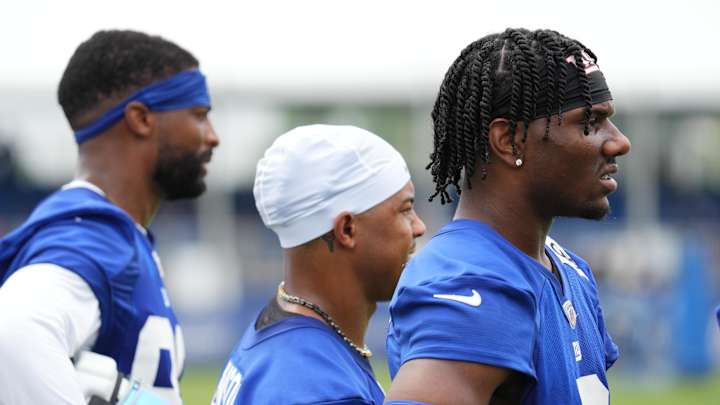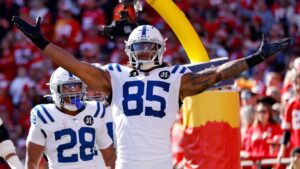
Despite boasting one of the NFL’s top young receivers in Malik Nabers last season, the New York Giants’ pass-catching unit, including tight ends and running backs, received a modest ranking of 24th from Pro Football Focus (PFF). Nabers’ impressive 1,000-yard season was not enough to elevate the team’s overall standing, as the Giants’ receiving corps collectively earned a 67.1 receiving grade, ranking 29th in the league.
Nabers stood out as the only Giants receiver to achieve a single-season receiving grade above 67.0, finishing as the ninth-highest-graded receiver in the league with an 87.1 mark. His record-breaking performance included 108 receptions for 1,204 yards and seven touchdowns, accounting for 34% of the Giants’ receiving yards. However, the rest of the unit struggled to match his output.
Challenges and Underperformance
Wan’Dale Robinson emerged as the second-most productive receiver for the Giants, setting career-highs with 93 catches, 699 yards, and three touchdowns. Remarkably, Robinson’s 93 receptions are the most by a Giants player who did not lead the team in receptions since 2018. However, his yardage fell short of the 700-yard mark, a rare feat for such a high number of receptions.
Veteran receiver Darius Slayton, despite his past contributions, saw a decline in his production last season. Known for leading the team in receiving yards in four out of six seasons, Slayton’s recent performance has left fans questioning his future impact. Meanwhile, Jalin Hyatt remains an enigma, yet to record a touchdown in his two-year career.
Rookies Tyrone Tracy Jr. and Theo Johnson showed potential with flashes of brilliance in the passing game, but their combined efforts resulted in only two touchdowns during their debut season. The Giants’ pass-catching unit is clearly in need of improvement to climb the PFF rankings.
Quarterback Play and Offensive Strategy
The Giants’ struggles last season were exacerbated by inconsistent quarterback play. The team rotated through four quarterbacks—Daniel Jones, Tommy DeVito, Drew Lock, and Tim Boyle—resulting in the second-lowest yards per passing attempt, the third-fewest passing yards, and the fewest passing touchdowns in the league.
Injuries to the offensive line further hampered the team’s performance, forcing the Giants to adopt a quick passing attack that limited wide receivers to short routes. Consequently, the team recorded the fewest 20+ yard passing plays in the league. However, the arrival of veteran quarterback Russell Wilson is expected to change the dynamic.
Wilson’s Impact and Future Prospects
Russell Wilson’s addition to the Giants’ roster brings renewed optimism. Last season, Wilson led the league in completion percentage on throws of 20+ yards and maintained a 90% catchable ball rate. His ability to execute deep passes—40 of 20+ yards, 17 of 30+ yards, and six of 40+ yards—offers a promising outlook for the Giants’ offense.
Wilson has already received positive feedback from his teammates during spring training. “Yeah, definitely,” Darius Slayton commented on Wilson’s passes. “It just has a nice pace, even spiral, nice pace. A firm ball that gets to you, so you don’t get killed, but smooth enough that it is very catchable.”
Head coach Brian Daboll has emphasized the importance of pushing the ball downfield throughout the offseason. If the Giants can successfully implement this strategy, their pass-catching unit is poised to rise in future PFF rankings.
Looking Ahead
The Giants’ pass catchers face a pivotal season as they seek to improve their PFF ranking. With Russell Wilson at the helm and a renewed focus on deep passing plays, the team aims to overcome last season’s challenges. The success of this endeavor will largely depend on the offensive line’s ability to protect Wilson and the receivers’ capacity to capitalize on downfield opportunities.
As the new season approaches, all eyes will be on the Giants’ pass-catching unit to see if they can translate offseason changes into on-field success.






